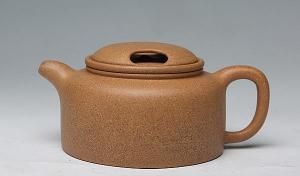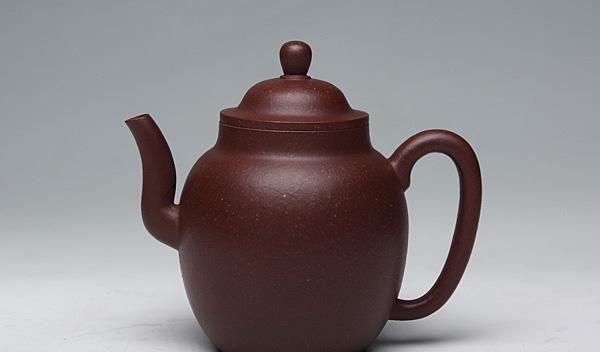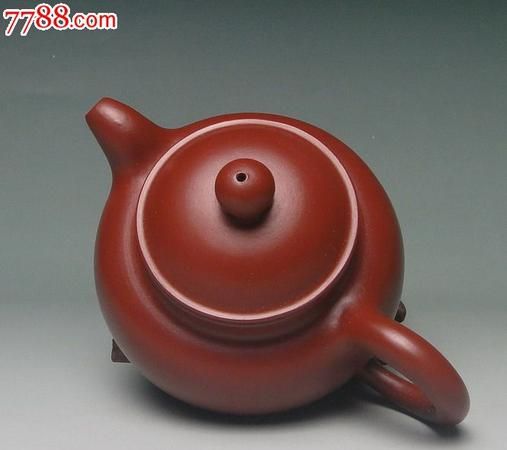Body
Contents of this article
- 1.·What is oh and how much does it cost?
- 2. What kind of clay materials are used in purple clay teapots?
- 3. Ranking of clay materials for purple clay pots
·What is oh and how much does it cost?
This pot with a seal script base is a "black mine" purple clay pot made by Wu Hongjuan.

What kind of mud are there in the purple clay pot?

Ranking of clay materials for purple clay pots
I am a novice, so I can only copy it for you. For details, you can ask in the forum of Zisha House. They are all experts. For details, please see:
How to identify raw ore cinnabar clay purple clay teapots
The red clay teapot is the best of purple sand and is talked about by many purple sand enthusiasts. Zhuni sketches are even more popular among Taiwanese purple clay enthusiasts and have become a great item for collecting and playing with purple clay. However, many enthusiasts look at Zhuni and Purple Clay pots as if they are looking at flowers in the mist. So what is the real Vermilion and Purple Clay pot, and what is the market price behind its mysterious veil? With many questions, the author visited Wu Hongjuan, a famous clay refining expert in Yixing, and Xu Jie, a young arts and crafts artist, to find out their true face in Lushan.
Wu Hongjuan introduced that the red clay teapot is a high-quality purple clay teapot. The clay material belongs to the red clay family and flourished in the early and middle Qing Dynasty in China. It is a special achievement of Yixing purple clay teapot. Zhu Ni is called "Shihuang Ni" in "Yangxian Teapot Series" and "Yangxian Famous Pottery Records". As a special kind of clay among purple sands, many pot lovers are obsessed with it because of its red color but not delicate and delicate feel. Zhuni has a very high iron content and is produced in the lower layers of tender mud deposits. It is also known as "stone bones that have not touched the wind." Stone bones mean soil that has not been completely weathered. It is as hard as a rock, but when exposed to water, it Collapse on its own.
Depending on the different production areas, the different methods of clay refining, and the different firing processes, the finished products have different appearance characteristics. For example, the color of Zhuni is not all red, but red, purple, black, yellow, etc., just like the colors of various flowers. After firing, the color appears red with yellow, yellow with red, and red with purple. Various effects and color presentation are closely related to the firing temperature. As for the question of pros and cons, it requires considerable experience to judge. The effect of cultivation mainly depends on the speed of "pulp extraction" and the degree of "moistening".
There are many opinions in the industry about the classification of Zhu Ni. Generally speaking, Zhu Ni is generally divided into three types: Zhaozhuang Zhu Ni, Zhaozhuang Gold Zhu Ni, and Small Coal Kiln Zhu Ni. The names are even more diverse. The so-called pear skin vermilion, water pattern vermilion, Dahongpao, yellow vermilion, and red core vermilion are derived from the Tang Palace famous sand mud Yuanfang according to different refining processes and combined with the burning process. Name the effect achieved after production.
When choosing a cinnabar clay teapot, how can we tell whether it is a raw cinnabar clay teapot? First of all, look at the color. Because the red mud is soft and tender, it should have a red, delicate, soft and lovely visual effect. If it looks too brightly red, it's mostly because iron red powder is added to the clay, so you need to double-check it when purchasing. Secondly, listen to the sound and snap it with your fingers. The sound is crisp and has good resonance. Many fans have a popular saying: "no wrinkles, no scars." How do we judge the effect of Zou when we choose? Because Zhu Ni is soft and tender, the shrinkage rate from molding to firing is between 18% and 30%. And because the vertical shrinkage of the Zhu Ni pot is greater than the transverse shrinkage, longitudinal wrinkles will appear in the Zhu Ni. The size of the wrinkles is related to the size of the Zhu Ni. The place of origin is directly related. However, most of the exaggerated wrinkles are produced by craftsmen in order to achieve the desired effect during the production process. They either add other ingredients to the mud or use some physical method. These special effects are basically caused by excessive wrinkles, so we can I am sure this is not a real red clay teapot.
The current price of Zhuni Zisha teapots ranges from 200 yuan to tens of thousands or even hundreds of thousands of yuan. What is the most reasonable price for Zhuni teapots in the market? How do we judge the rationality of the price?
We learned about the survival data of Zhu Ni from Teacher Wu Hongjuan. The raw ore of Zhaozhuang Gold Zhuni is about 3 tons, the raw ore of Zhuni from Small Coal Kiln is about 30 tons, and the raw ore of Zhaozhuang Zhuni is about 15 tons, which shows how precious the raw materials of Zhuni are.
Young arts and crafts artist Xu Jie is an expert in making red clay pots. She is very skilled in the technique of making red clay pots. From her, we learned that not just any arts and crafts artist can make it. The reason for the creation of Zhuni pots is that Zhuni is easily deformed during the firing process, so making Zhuni pots is more difficult and has a lower yield than other types of clay pots. Because firing is not easy, ordinary craftsmen are not willing to do it. Another reason is that Zhu Ni itself is expensive and the low yield has discouraged many arts and crafts artists who are not familiar with Zhu Ni.
The process of making a Zhuni pot is difficult and the clay materials are precious. These determine the price of the Zhuni pot. Generally, a pot made by an ordinary arts and crafts artist will cost more than 1,500 yuan. The price is still the cost of the clay itself plus a little craftsmanship price. If the price is lower than this price, you can’t even buy the clay. How can you buy a vermilion clay pot? Therefore, when buying a Zhuni Zisha teapot, you need to first understand the characteristics of Zhuni Zisha teapots. After in-depth understanding, you should choose carefully and do not buy blindly.
"The cold spring in the small stone leaves the taste of morning, and the new purple clay is filled with spring flowers." The artistic beauty of the purple clay pot lies in its combination of clay, color, shape, style, seal, inscription, Painting, calligraphy, sculpture, seal cutting and other arts are integrated into one.

The above is all about the price of Wu Hongjuan purple clay teapot, what is oh and how much does it cost, as well as the related content about Wu Hongjuan. I hope it can help you.
